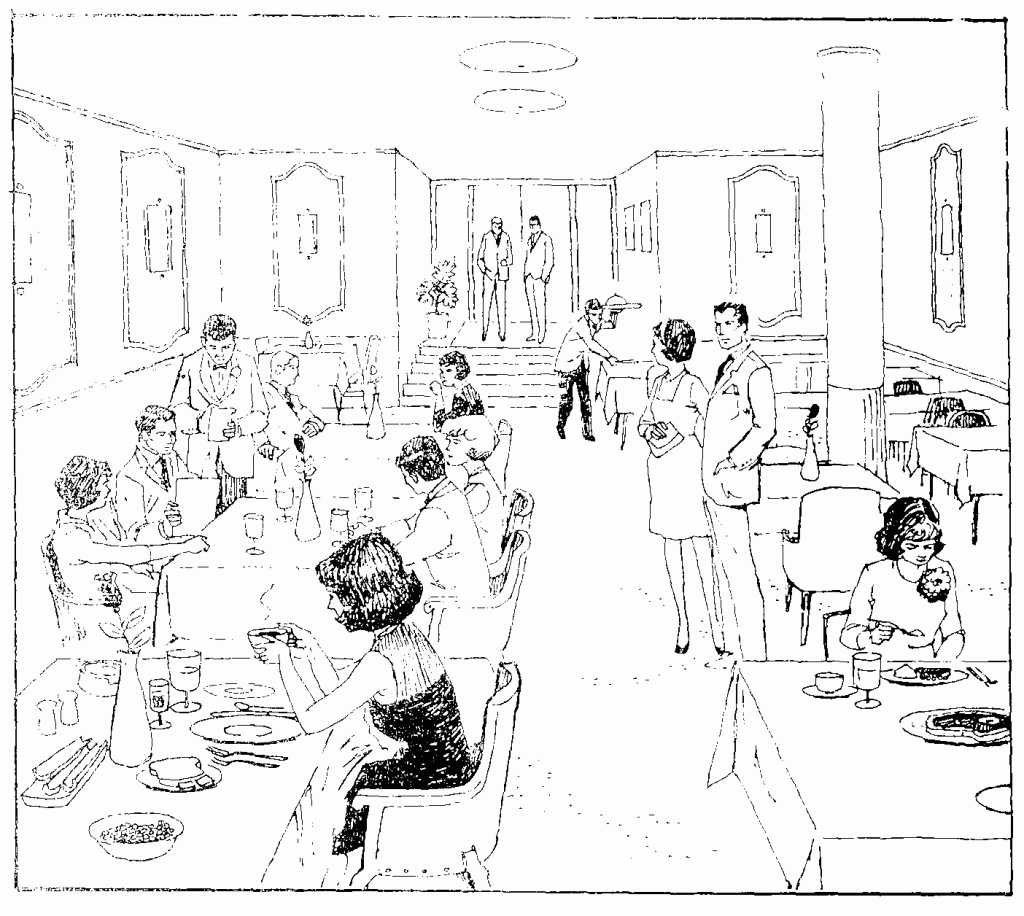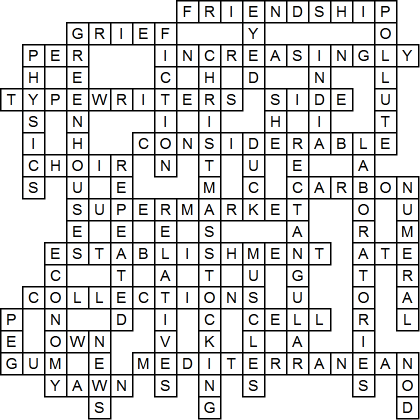1. to begin
2. dressed
3. a toast, cheers
4. corsage
5. big, bigger, biggest
6. check
7. column
8. to get, receive
9. plate
10. flight of stairs
11. silverware
12. enjoy your meal
13. to cross
14. to order
15. full
16. lady
17. background
18. before
19. to set the table
20. in the front
21. corner
22. everyone
23. foreground
24. simply
25. coffee drinking
26. elegantly
27. waiter
28. to wait
29. to eat
30. light
31. what kind of
32. meal, food
33. wine drinking
34. fork
35. middle
36. for what
37. completely
38. after
39. first
40. guest, customer
41. couple, pair
1. Is the restaurant completely full?
2. Are the people in this restaurant dressed elegantly or simply?
3. What is the woman in the foreground drinking?
4. What kind of food is on the table in the bottom left corner?
5. What kind of seasonings do you usually find on the dinner table?
6. What kind of silverware is to the right of the plate?
7. How many forks does each guest get in this restaurant?
8. Do you begin eating with the left or the right fork?
9. What stands in the middle of each table?
10. At the second table does the man or the lady order the meal?
11. What is the man by the waiter reading?
12. What is on the top of the stairs?
13. Who is setting the table in the background?
14. What are the couple in the middle waiting for?
15. Who is wearing a corsage?
16. What is the lady on the first table on the right eating?
17. Where do you see a column in this picture?
18. Do you say “cheers” when you’re drinking coffee or when you’re drinking wine?
19. Do you say “enjoy your meal” before or after you have eaten?
20. When do the guests get the check from the waiter?
Paragraph: A Meal in a Restaurant
Write a paragraph about a meal you ate in a restaurant. What did you have to eat? How did you enjoy it? What kind of restaurant was it? Was the restaurant elegant and fancy, or was it plain and simple?



